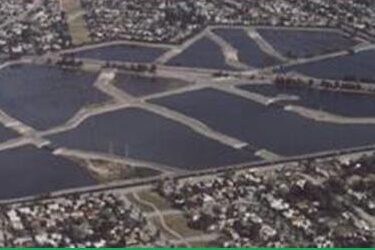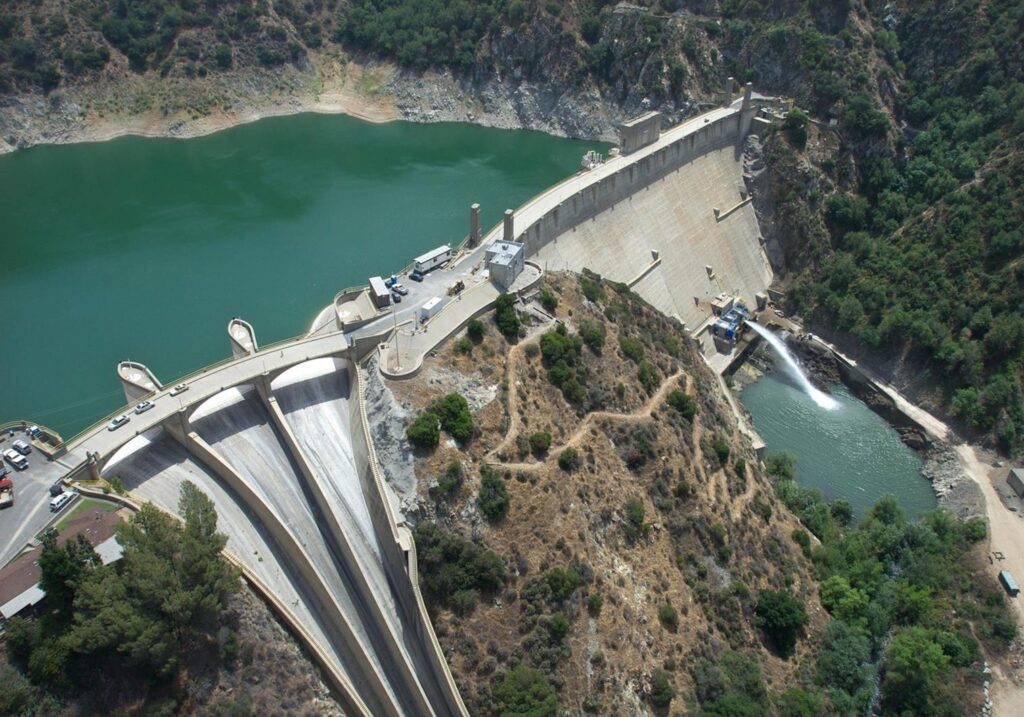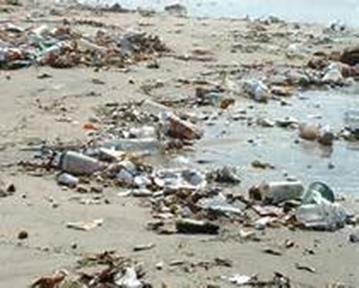LEARN ABOUT
Stormwater Management

Within the Greater Los Angeles County Basin, the Los Angeles County Flood Control District (LACFCD) and the U.S. Army Corps of Engineers share a joint responsibility in managing flood risk. The LACFCD is the main regional agency able to address large regional drainage needs and uses available funds to operate and maintain the existing flood control facilities and systems that transect the various cities. During years of heavy rainfall, the existing flood control system has largely prevented serious flooding that once plagued the Los Angeles area many years ago. The District’s municipal flood protection and water conservation system is one of the largest in the world and includes 14 major dams and reservoirs, 487 miles of open channels, 162 debris dams, 2,919 miles of underground storm drain, and more than 80,000 catch basins. The District boundaries encompass 2,752 square miles, 6 major watersheds, and 85 cities. Planning efforts to rehabilitate flood control facilities also considers other potential beneficial uses of those facilities which include environmental ecosystem restoration, enhancement of water quality, and recreation amenities.
Flood Control Infrastructure

Flood Risk Management in Los Angeles County is the primary responsibility of the Los Angeles County Flood Control District (LACFCD), the Army Corps of Engineers, and the 88 Cities. The LACFCD, a special district regional agency has the largest channel and storm drain system in the county.

The LACFCD also has 14 dams to control stormwater runoff. The Corps of Engineers, Los Angeles District, a Federal agency, has 4 major dams and open channels to control stormwater runoff. Most cities have their own smaller drainage systems. The largest city-owned drainage system belongs to the City of Los Angeles.

Flood Risk Management is also accomplished through the Federal Emergency Management Agency’s National Flood Insurance Program (NFIP). The County of Los Angeles and most cities are members of the NFIP. The NFIP has policies and procedures to reduce flood risk. Also, the County has adopted Floodways where building is prohibited.
Water Conservation

In addition to flood control, The LACFCD is the primary agency responsible for capturing and storing stormwater and replenishing the groundwater in Los Angeles County. The LACFCD’s mission is to conserve as much of the stormwater as practicable, especially since approximately 30 to 40 percent of the water used in the County is pumped from groundwater supplies which provides a local water supply alternative to imported water. Without the LACFCD facilities and conservation efforts, the groundwater supplies would be depleted in many areas.

In Southern California, storm conditions vary each year because of cycles of changing ocean temperatures and currents. To manage highly variable storm conditions and storm runoff, the LACFCD has built dams and spreading ground facilities to store and conserve the stormwater. In typical years, the LACFCD infiltrates more than 270,000 acre-feet (AF) of captured stormwater, imported water, and recycled water into the various groundwater basins in Los Angeles County. In wetter years that number can exceed 700,000 AF and in drier years may be little more than 150,000 AF. The use of water conservation facilities or spreading grounds adjacent to river channels and in soft-bottom channels permits water to percolate into groundwater basins for later pumping. These groundwater recharge facilities are located in areas where the underlying soils are composed of permeable formations and in hydraulic connection with the underlying aquifer.
Sediment Management

Proper management of sediment is necessary to protect public safety, and property, and ensure adequate quality of life. The accumulation of sediment within reservoirs, debris basins, and streams can reduce the storage capacity in those facilities which reduces the potential for providing water supply benefits and preventing flooding. When accumulation occurs within the stream channel, localized street flooding or inundation of public and private property may occur. Recent catastrophic fires in the region have also resulted in heavy sedimentation at downstream dam and debris basin facilities drastically reducing flood management and water storage capabilities. Sediment from the reservoirs and debris basins is hauled to various LACFCD sediment placement sites. These sediment placement sites can fill up quickly prompting the need for the LACFCD to plan and search for new sediment placement sites and alternative methods for dealing with the sediment.
More information on sediment management
Stormwater Runoff

Protecting the quality of our major water resources such as rivers, creeks, and the ocean is a major challenge in the heavily urbanized areas of Los Angeles County. The stormwater system is meant to provide flood protection and drainage during rain (wet weather flows) and also handles the urban runoff from landscape irrigation, car washing, and other dry weather flows.

Stormwater and urban runoff pick up non-point pollutants such as sediment, airborne chemicals, pet waste, trash, oil, and other auto fluids and carry them into the storm drains which flow to the local rivers, creeks, and the ocean untreated.

Cities and other agencies with jurisdiction over land use are primarily responsible for improving surface water quality. However, the Los Angeles County Flood Control District (LACFCD) which owns and operates many of the storm drains leads to major water resources partners with these stakeholders in various watersheds to improve water quality. Together, the various stakeholders and the LACFCD plan to reduce runoff from urbanized sites and capture and treat the remaining runoff to meet established water quality standards.

In urbanized areas, storm-water and urban runoff volumes can be reduced by removing impervious surfaces and utilizing swales, berms, or other onsite Best Management Practices (BMP) to capture and infiltrate the runoff. Larger water quality projects can capture, treat, and naturally recharge the groundwater to augment local drinking water supplies.
Services
- Planning
- Dams & Reservoirs
- Seawater Barriers
- Sediment Management
- Soft Bottom Channel Clearing
- Spreading Grounds
- Environmental Review
- Hydrologic Data
- Flood & Fire Information
- Report A Problem
